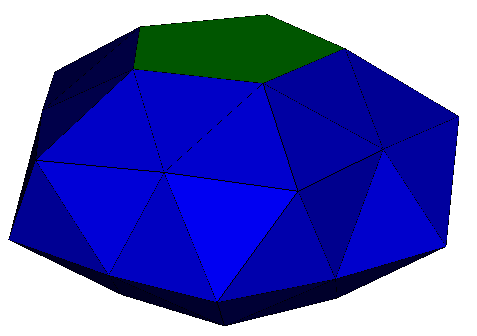
It is part of an infinite family of bifrustocingulums for all coprime n/d with 2 < n/d < 6. Examples are provided for n/d = 4, n/d=5/2, n/d=7/2 and n/d=7/3. Retrograde isomorphs are also possible with a lower limit of 6/5 being postulated. Examples with n/d=5/3 and n/d=7/4 are given.
The family described above is one of the simpler members of a group of families where a frustum can be taken from a frequency-m pyramid with n-cingulums inserted. The above case is (m,n) = (2,1). For (m,n) = (2,0) two cases are possible. A bi-frustum with coplanar faces, and a gyro-bi-frustum which is more commonly known as a snub anti-prism. An example is provided of a pentagonal case for (m,n)=(3,1). These families share much in common with Paul Gailiunas's "Twisted Domes" (pdf).